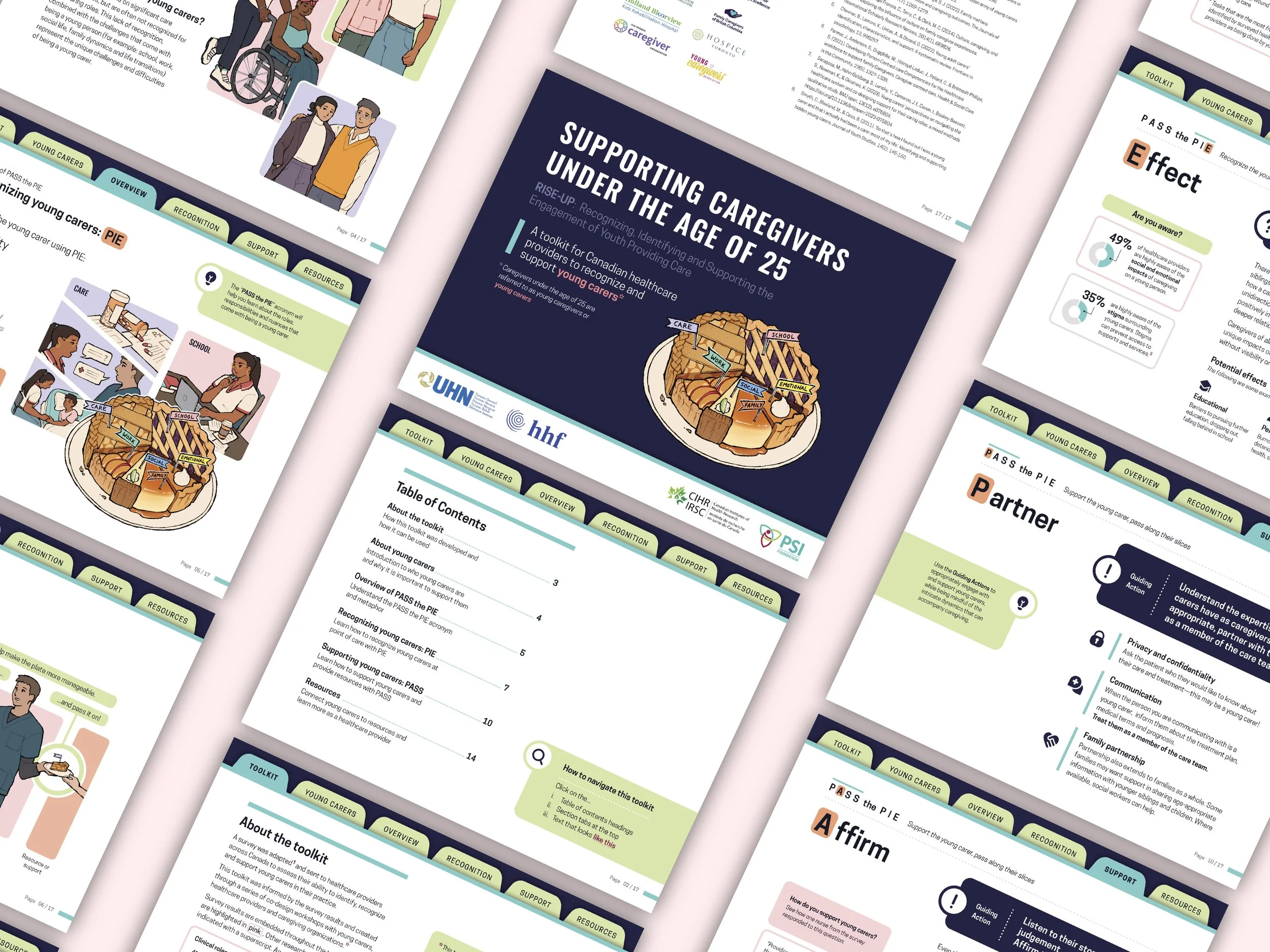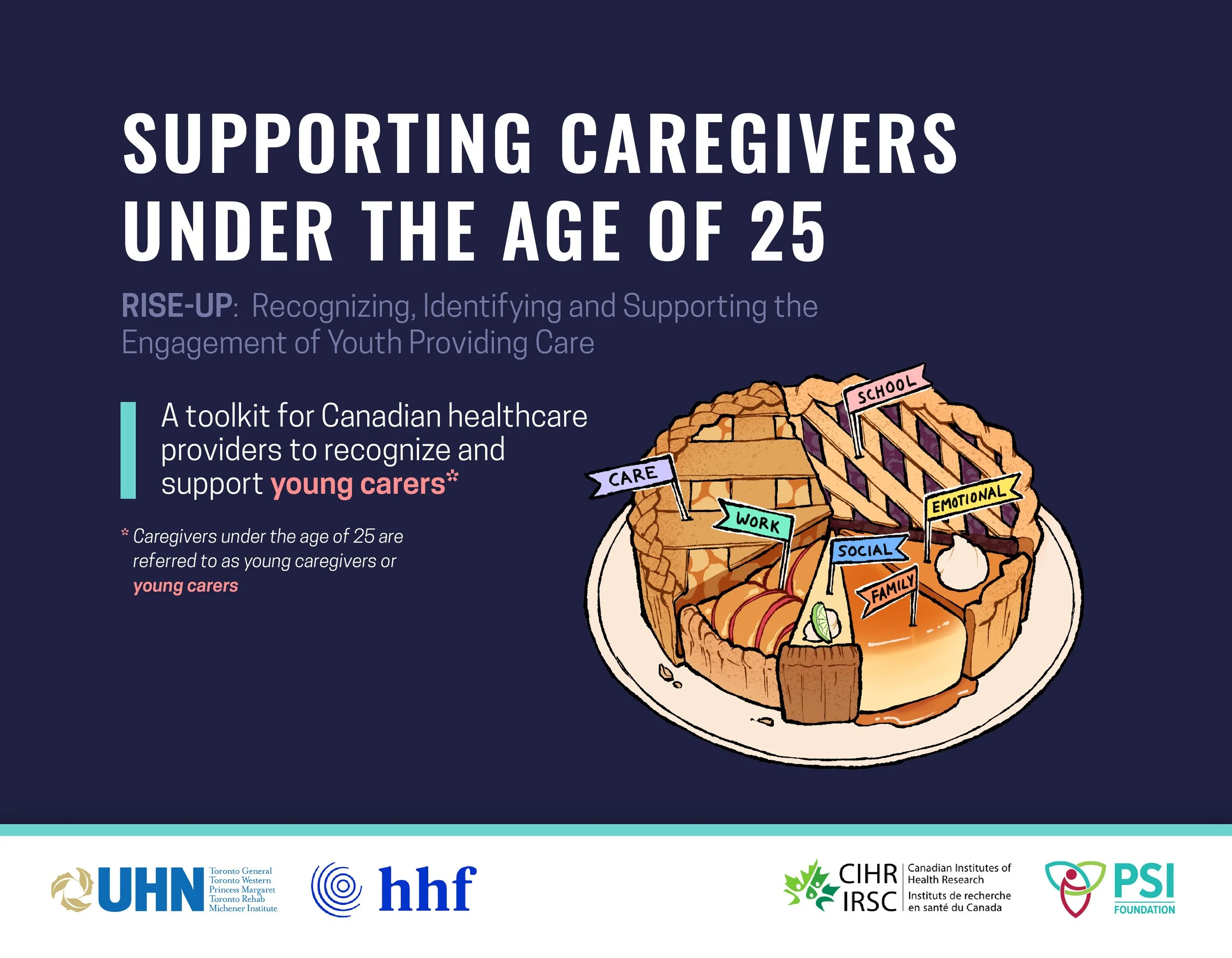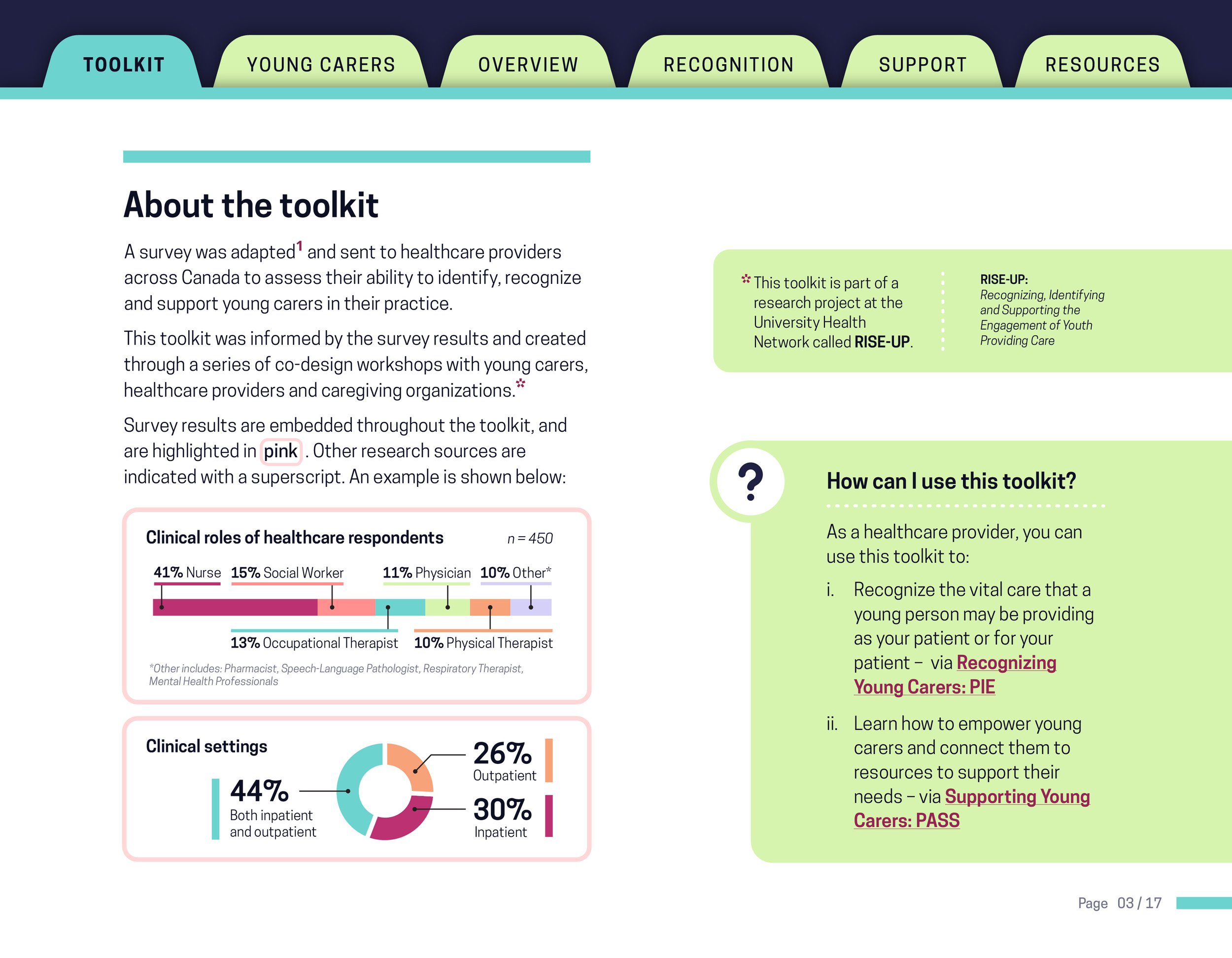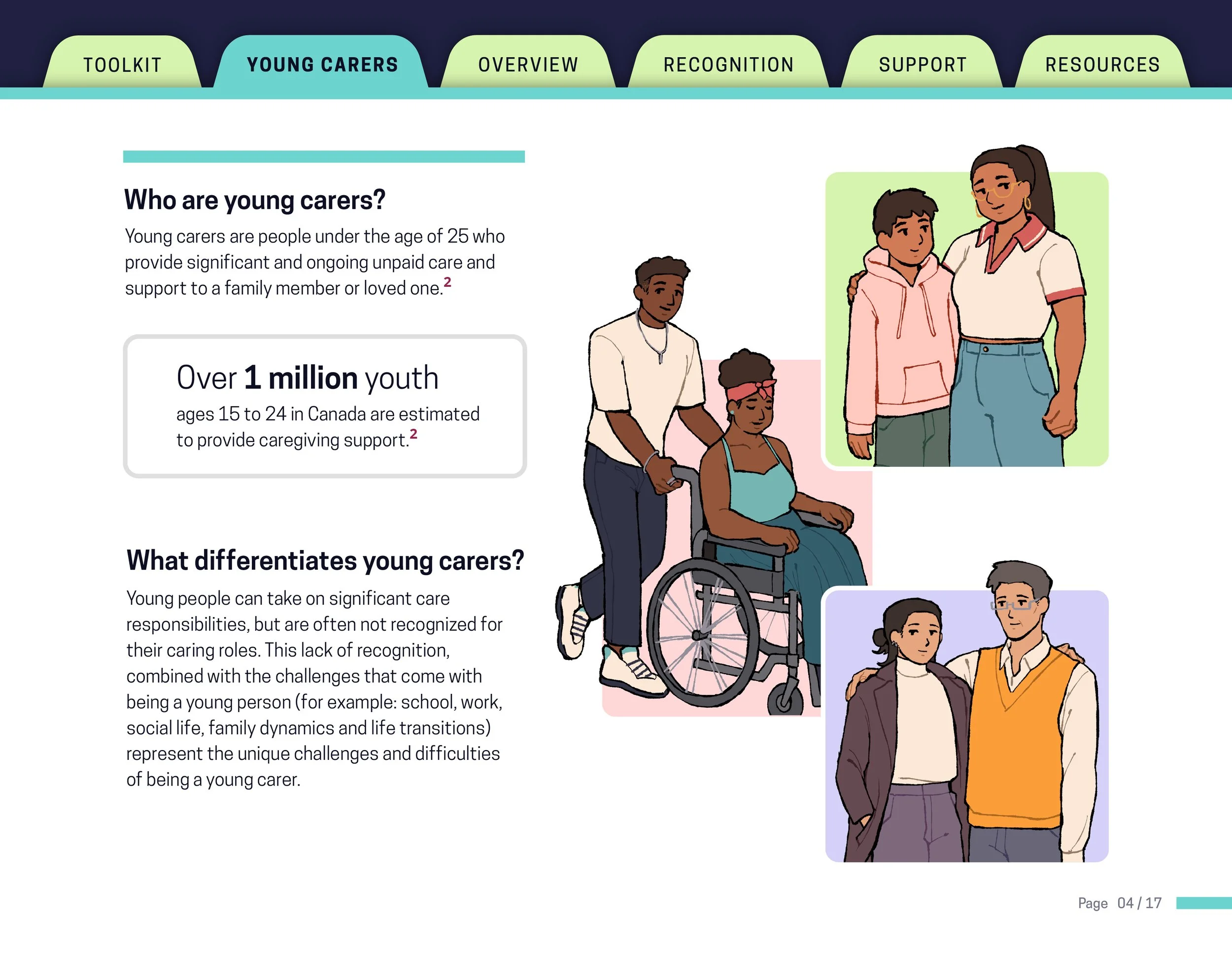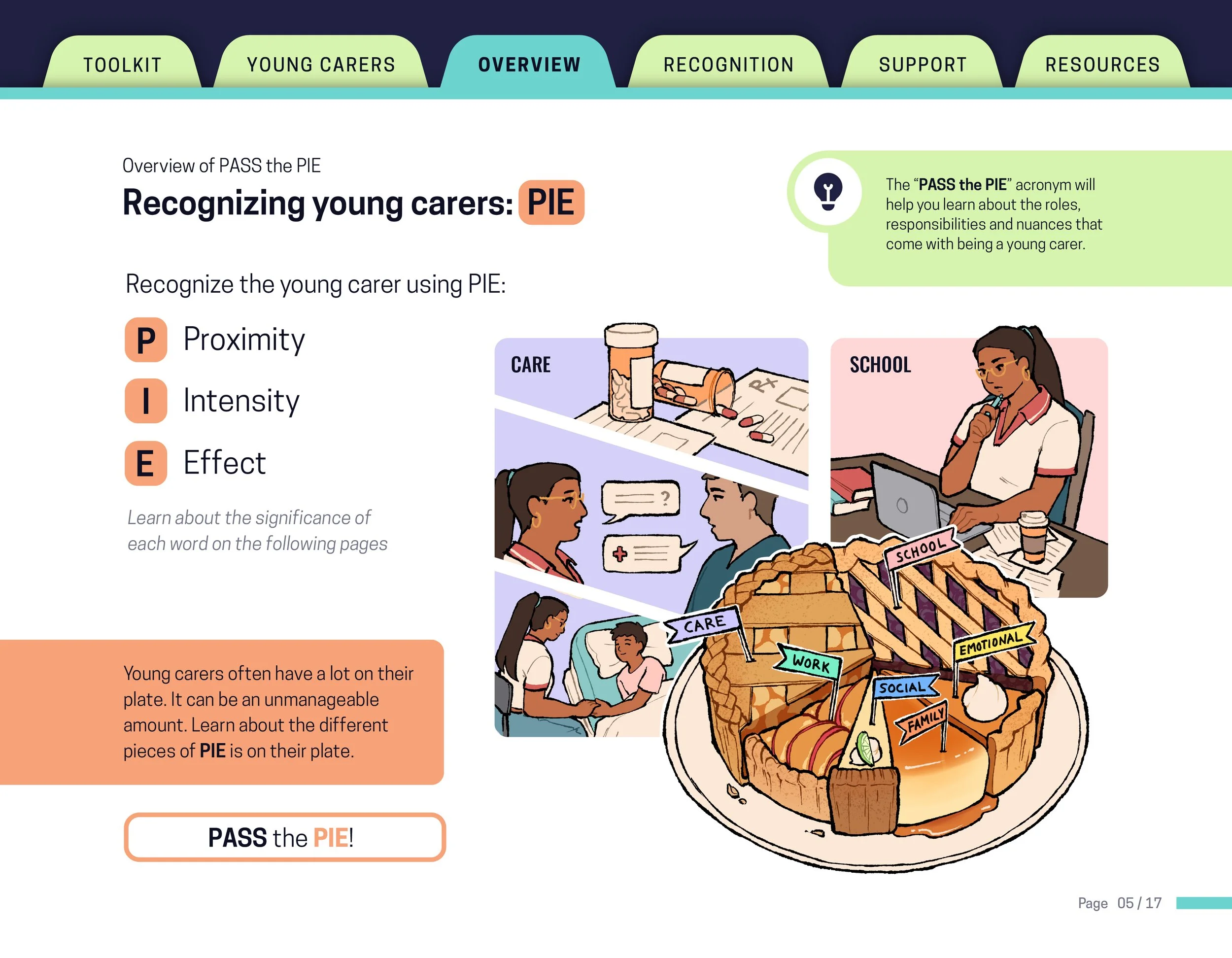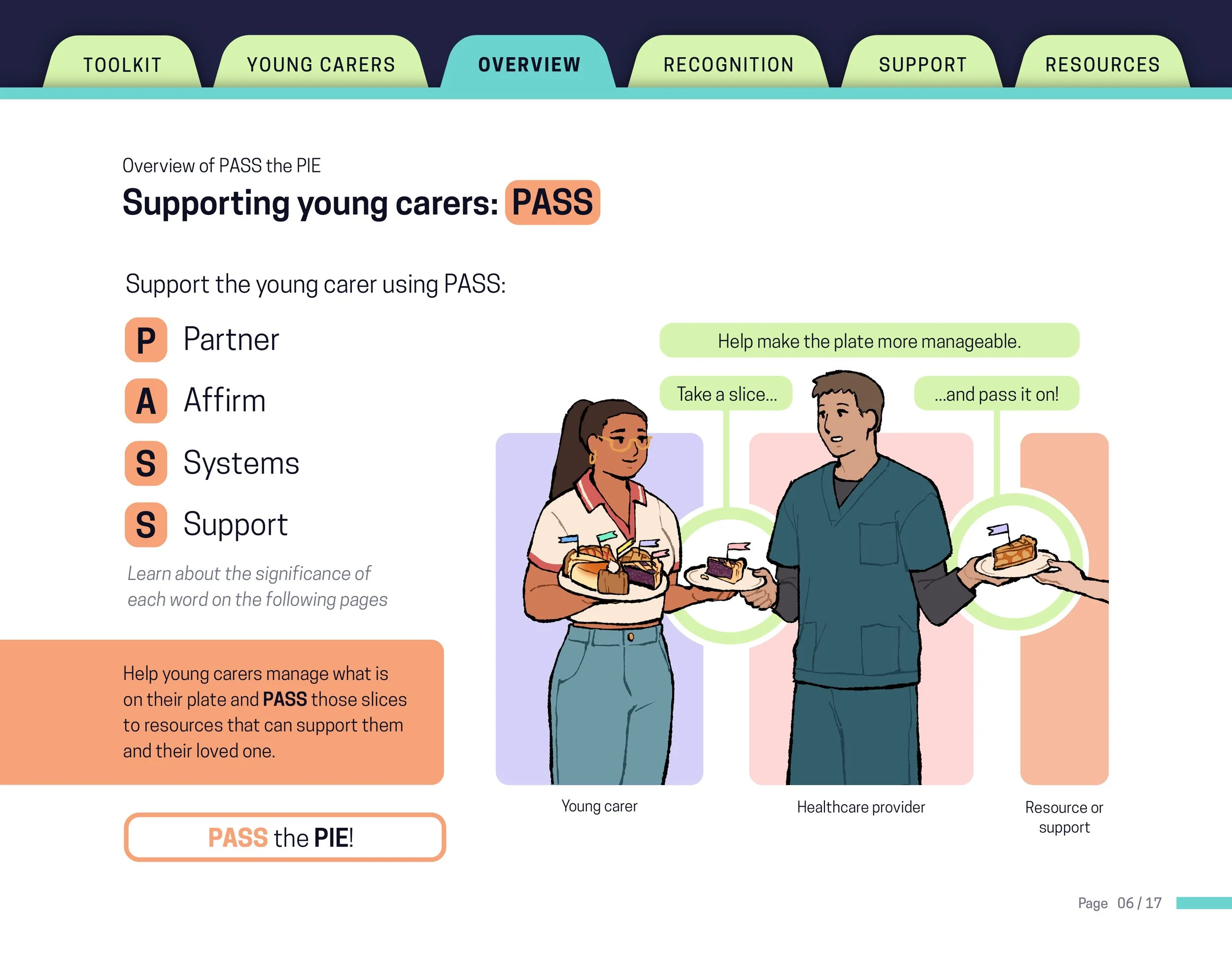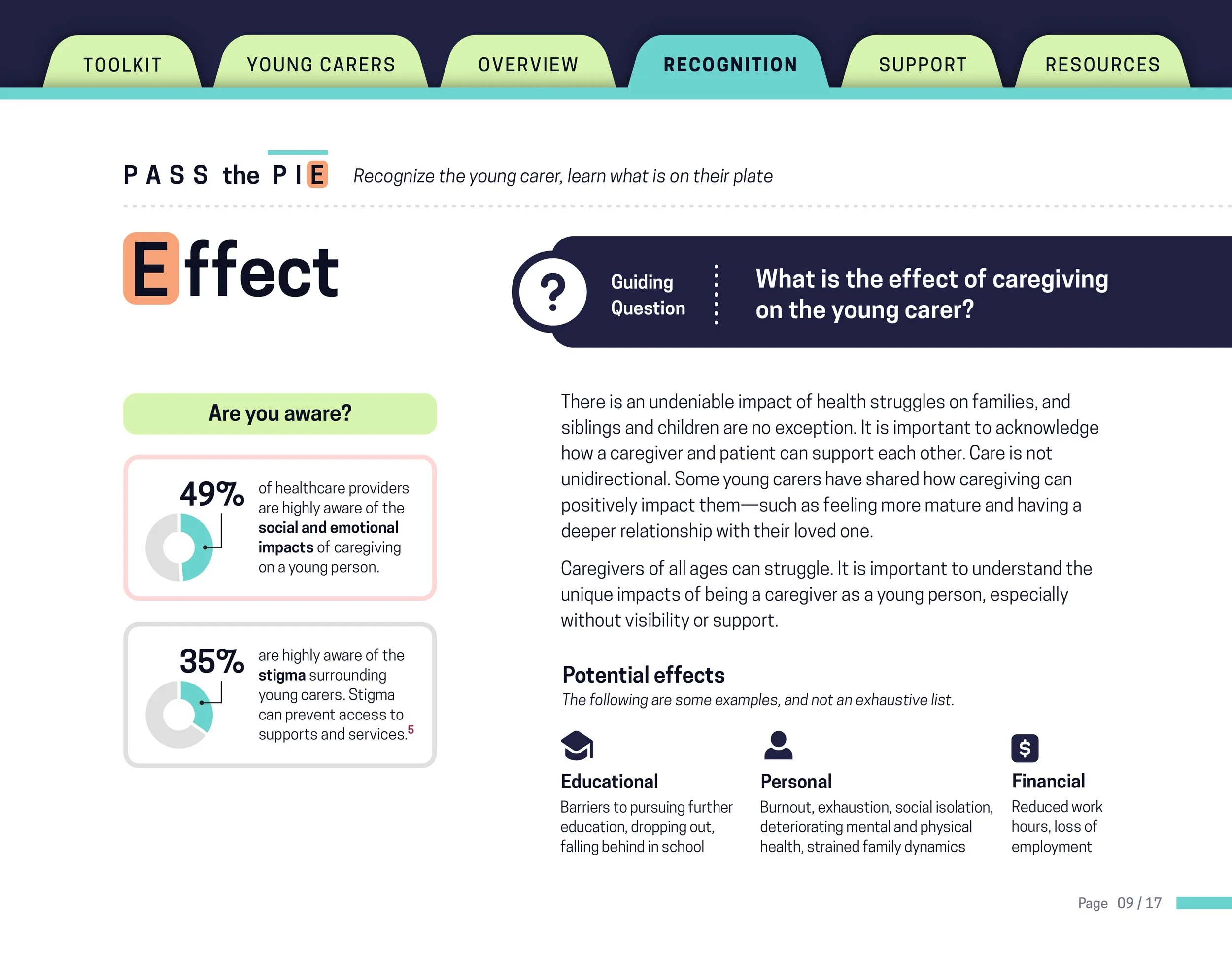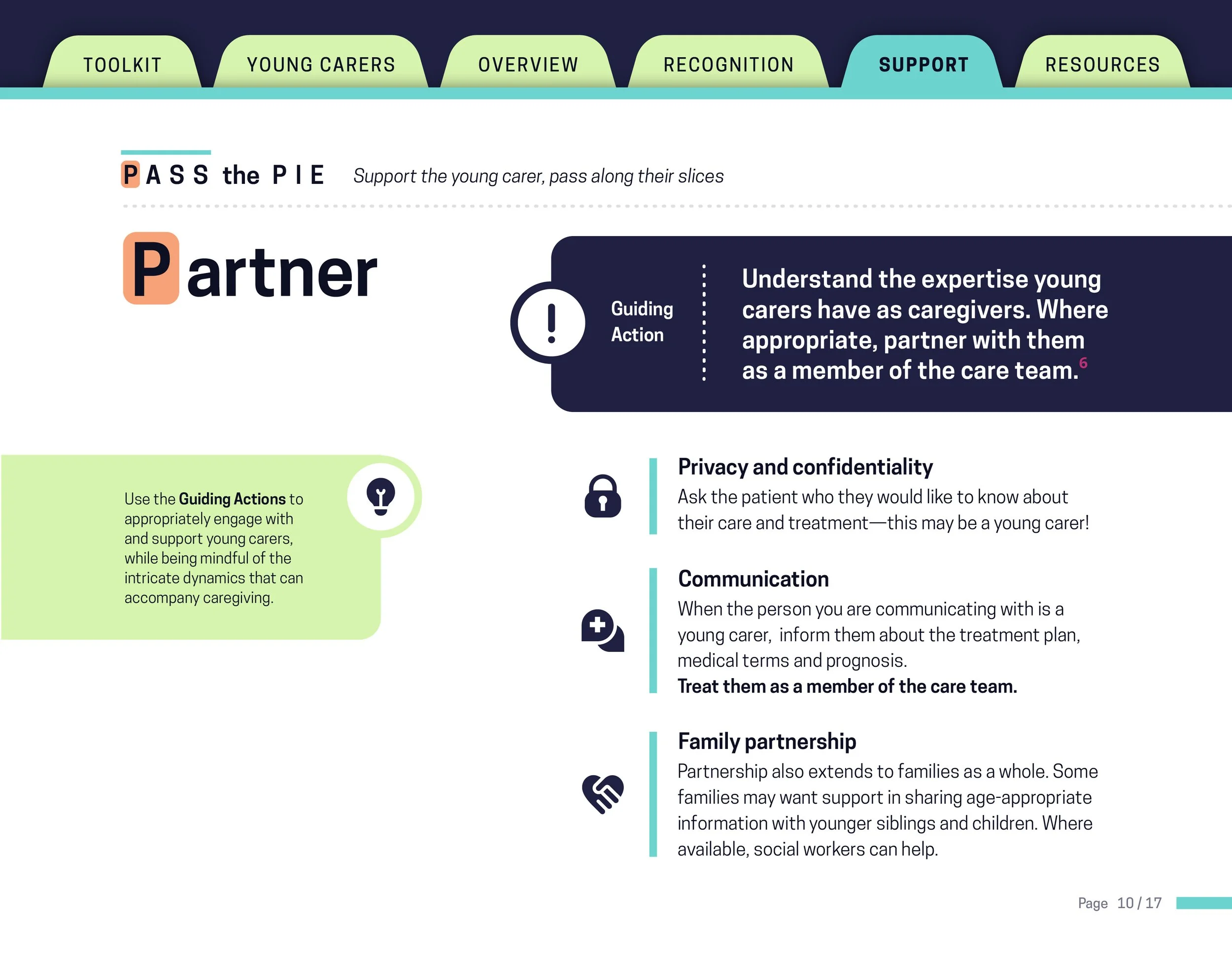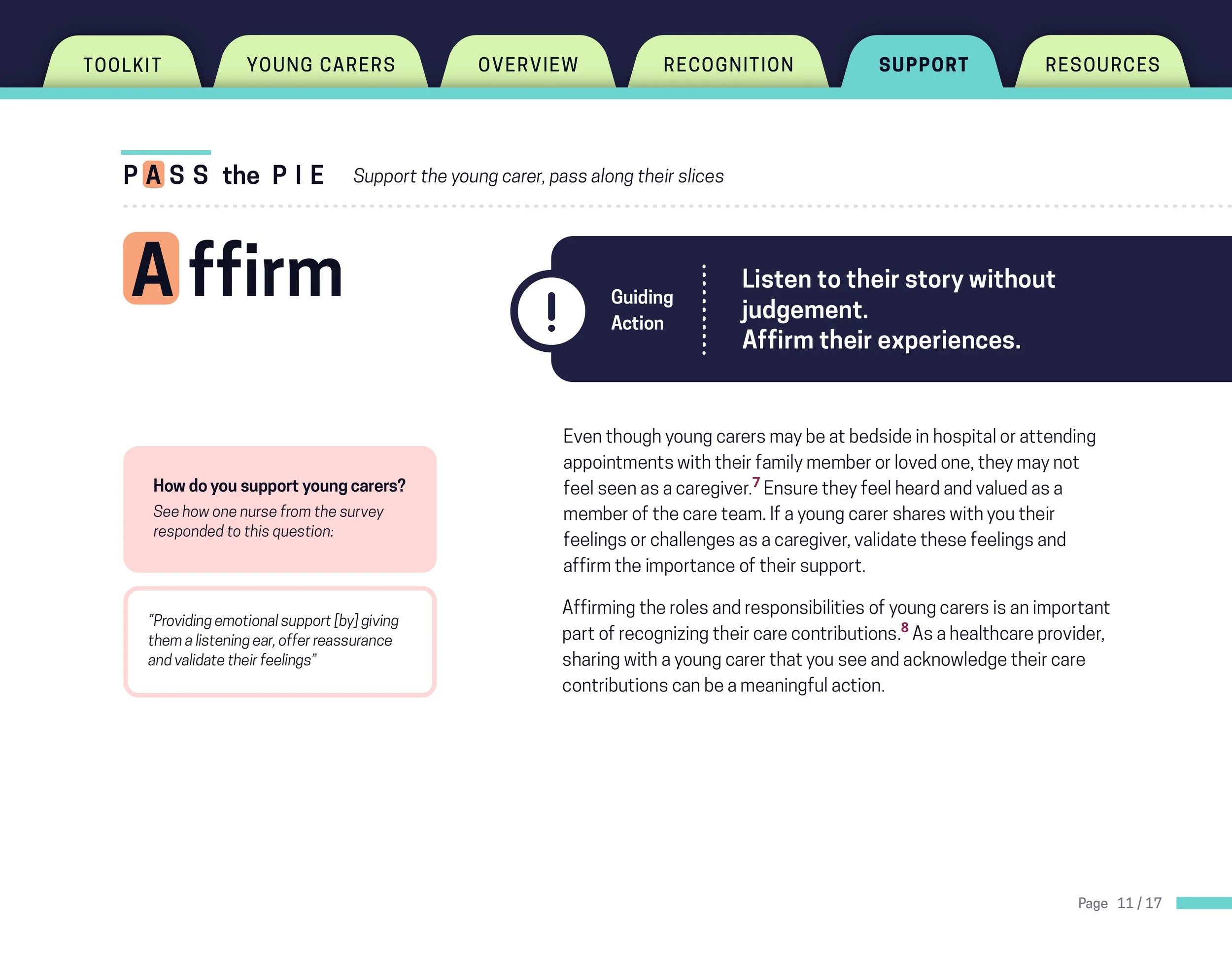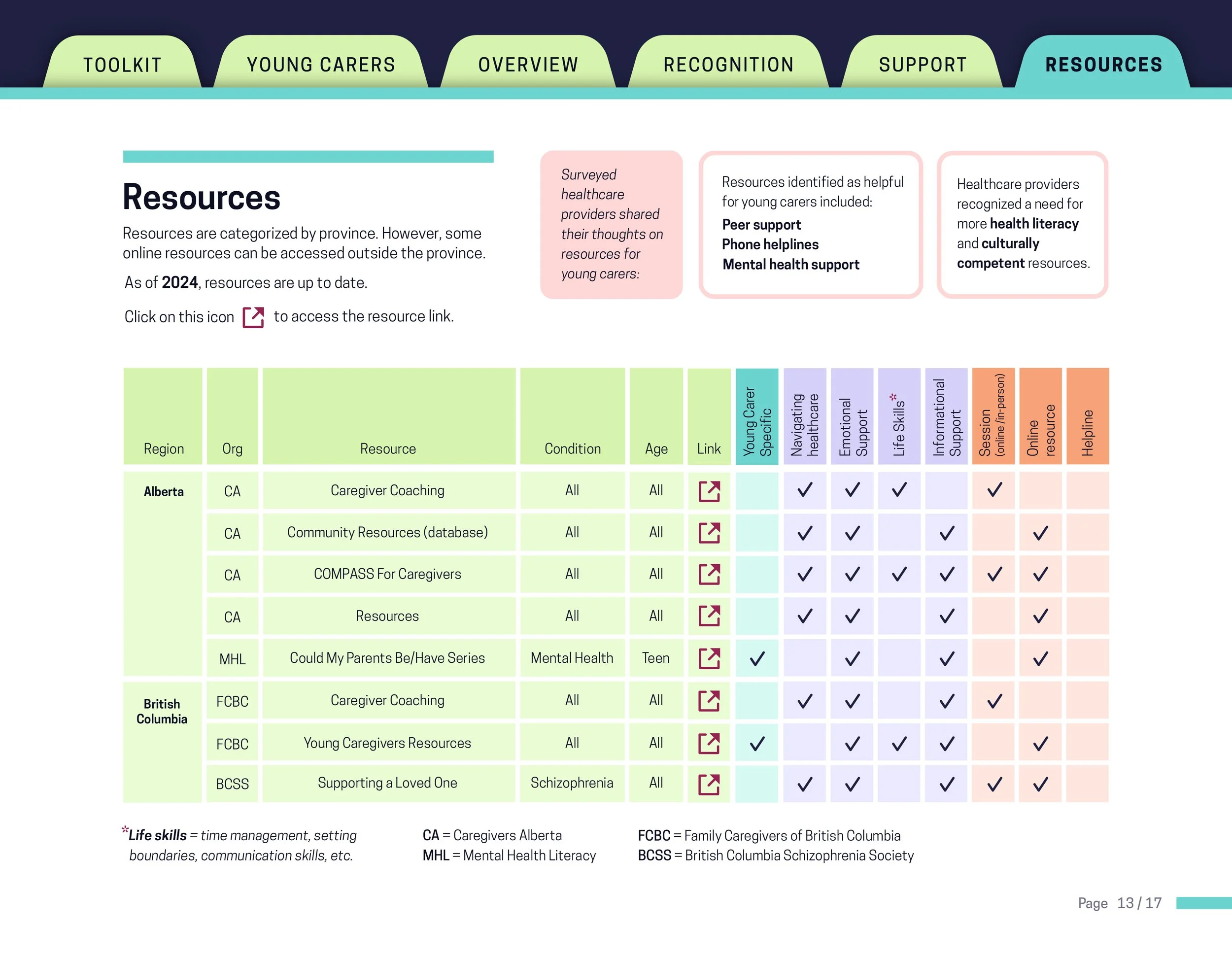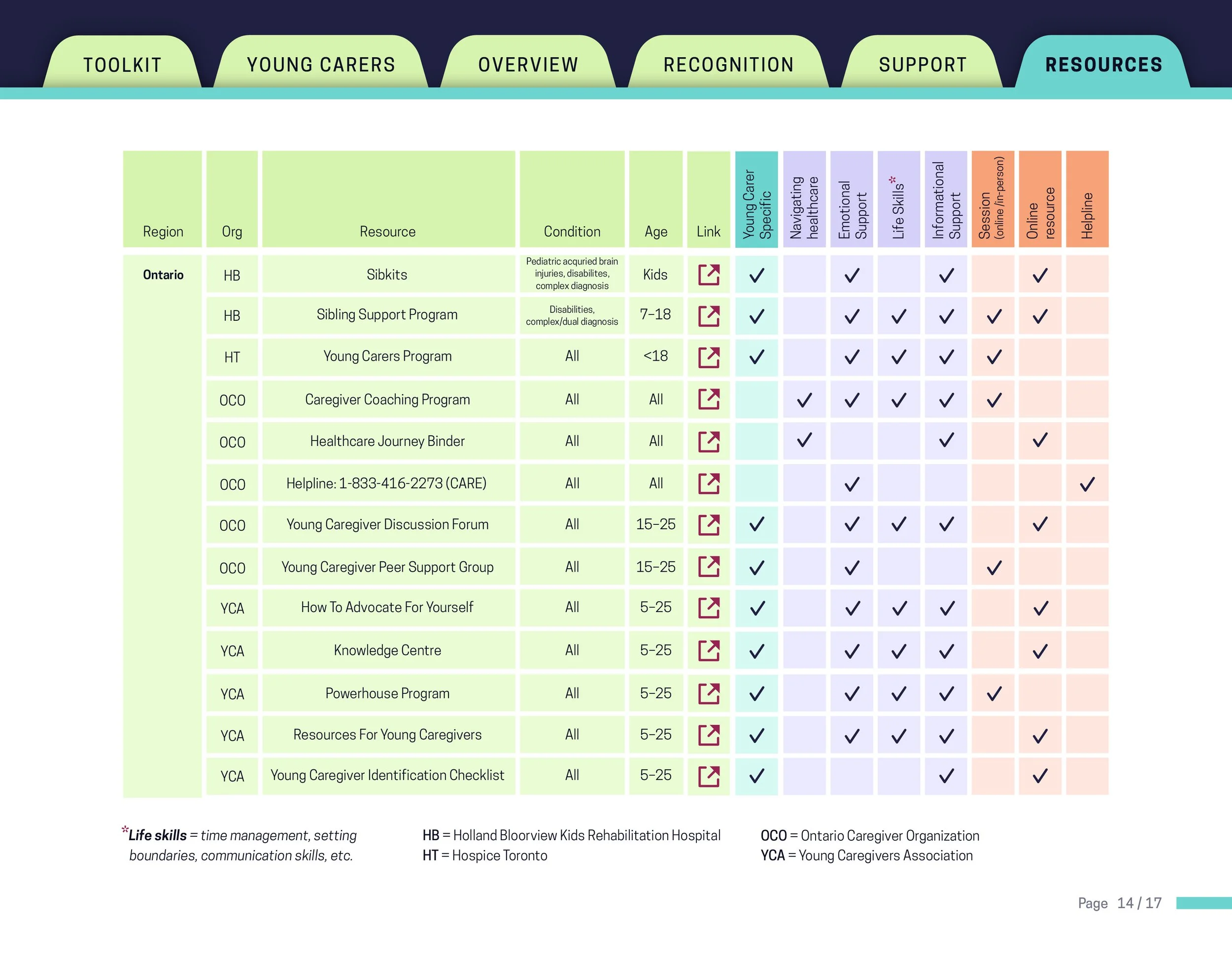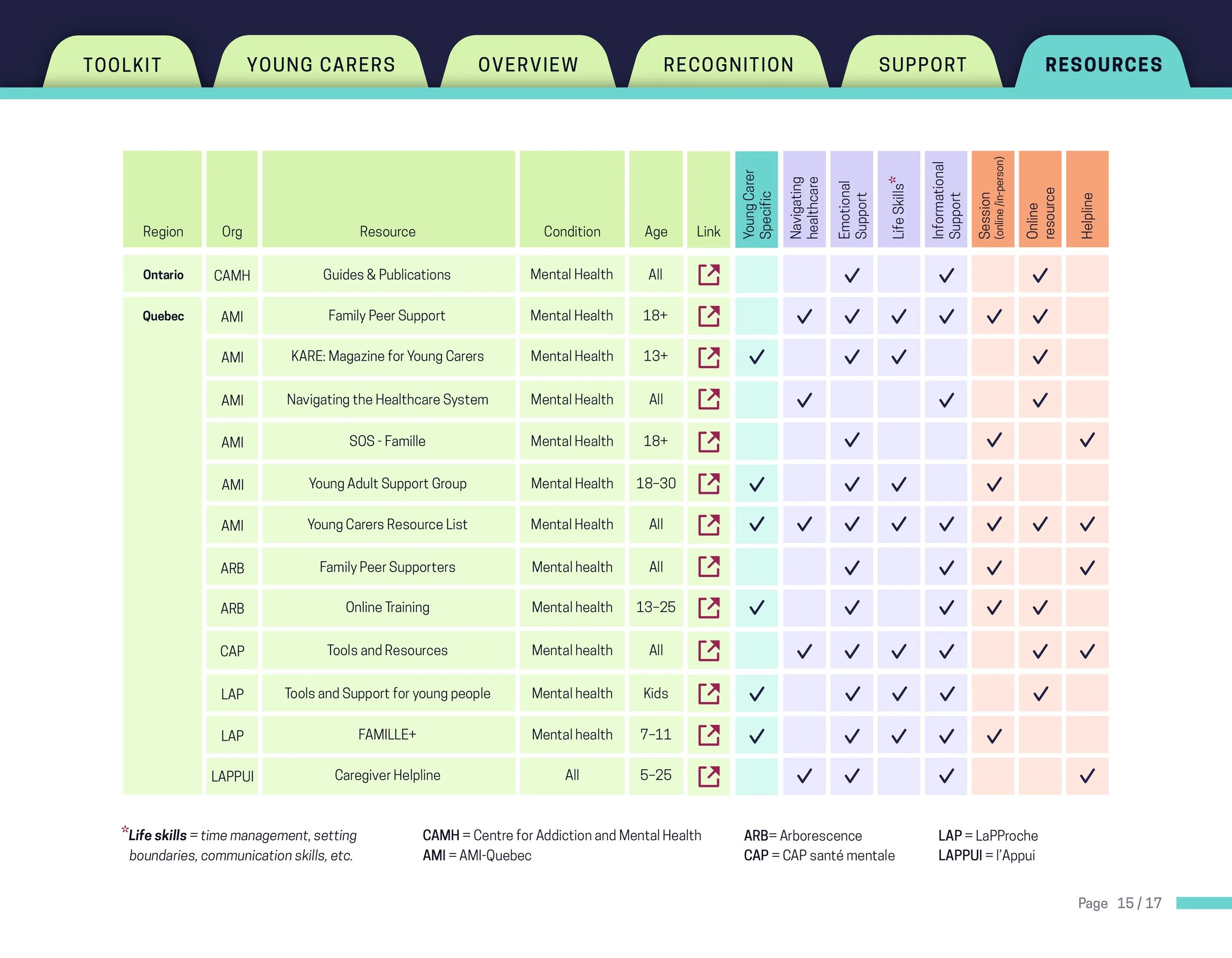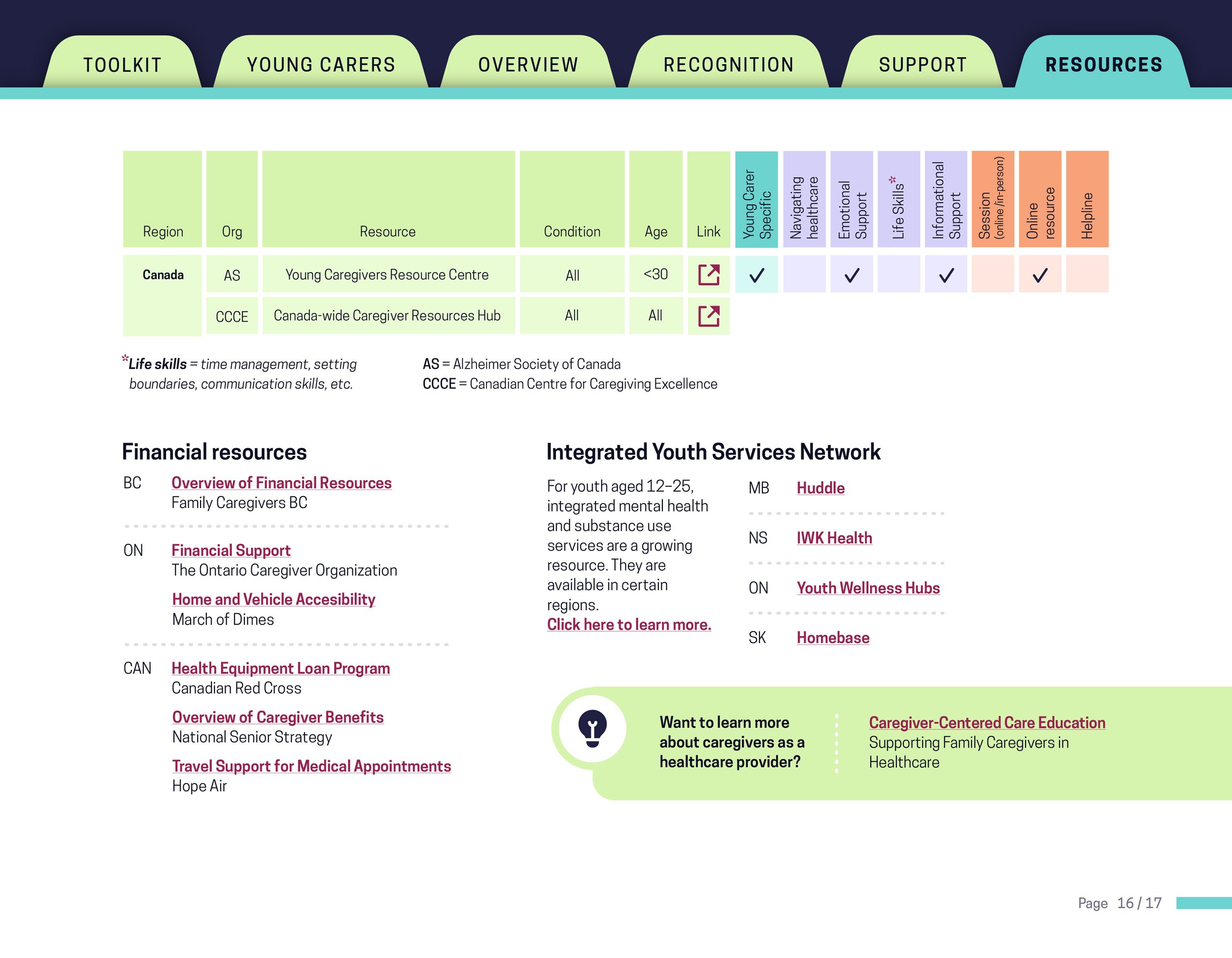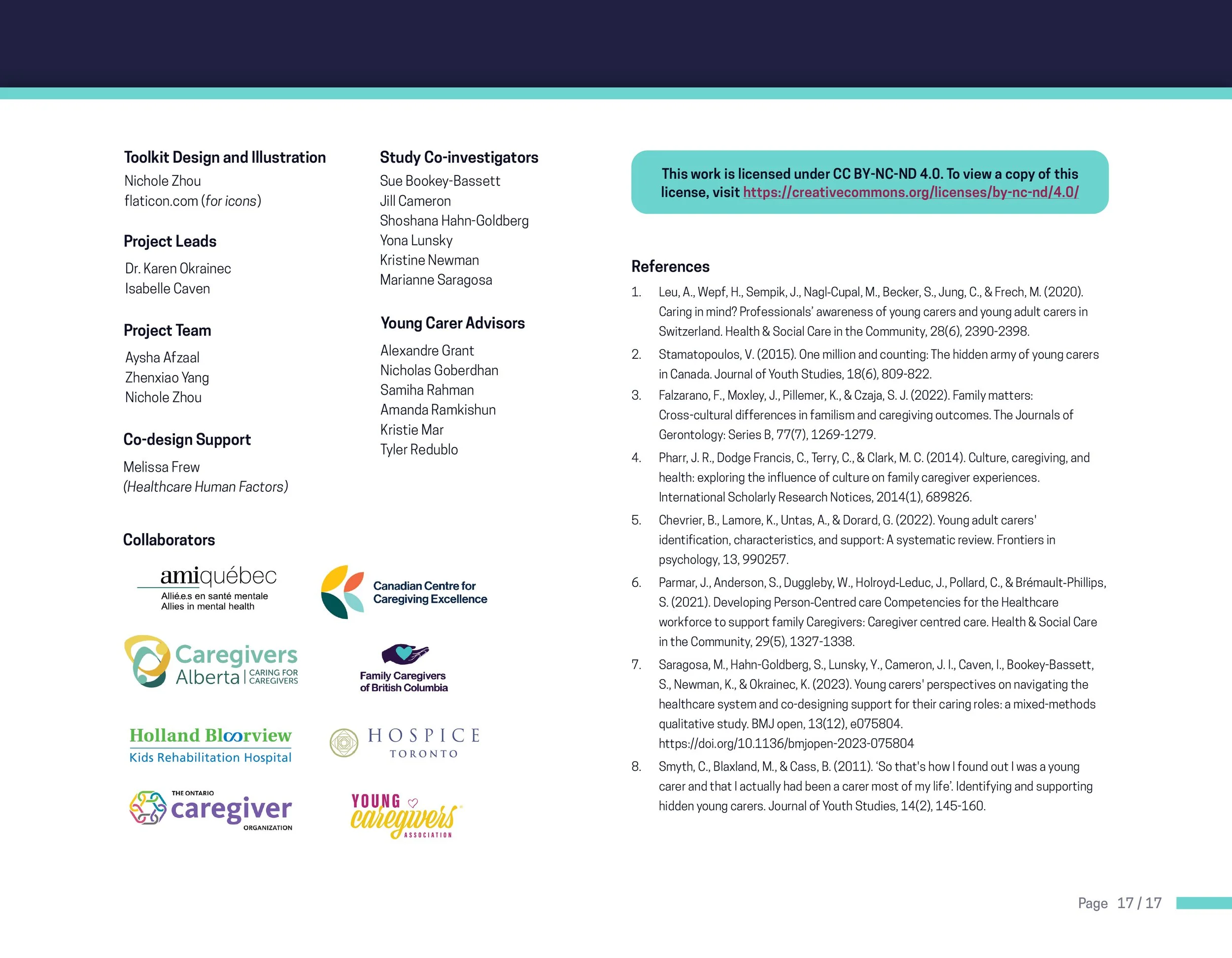Toolkit for healthcare providers
Supporting Caregivers Under the Age of 25
Purpose
The purpose of this toolkit is twofold: (1) to translate research from the RISE-UP project and (2) to act as a resource for healthcare providers to identify and support young caregivers, while addressing gaps in healthcare. The toolkit is utility-focused, and its development was guided by co-design workshops with researchers, young carers, healthcare providers, and caregiver organizations.
The toolkit is accompanied by an infographic and a graphic narrative. The graphic narrative is featured in an article published by the Ontario Hospital Association.
A research publication on the co-creation process is currently underway.
Client / Team
Dr. Karen Okrainec (Principal Investigator, University Health Network), Isabelle Caven (Co-Investigator, University Health Network)
Date
October 2024
Role
Research, Media Audit, Content Writing, Illustration, Graphic Design
Format
Online interactive PDF with printable version
Audience
Canadian Healthcare Providers
Tools
Adobe Illustrator, Adobe Acrobat, Clip Studio Paint, Microsoft Excel, Microsoft Word, Miro, Notion
Funding
Canadian Institutes of Health Research (CIHR), PSI Foundation
Project overview
RISE-UP
The Recognizing, Identifying and Supporting the Engagement of Youth Providing Care (RISE-UP) project at the University Health Network surveyed Canadian healthcare providers to assess their ability to identify, recognize, and support young carers in their practice.
Co-design
Why co-design?
Allowed young carers, researchers, healthcare providers, and caregiving organizations to collaboratively shape and inform the development of the project.
Ensured that the final product was genuinely useful and addressed a real need.
Helped the team understand the problem space and current landscape, identifying practical opportunities for implementation along the way.
Co-design sessions
The co-design workshops were conducted online using Microsoft Teams and the collaborative whiteboard platform Miro. They were structured to engage participants in activities and encourage meaningful discussion. I helped design activities and facilitated a session during the third co-design workshop.
The problem space and the toolkit
While there are pre-existing resources for young carers, they are not centralized in one accessible location. Additionally, although healthcare providers may recognize young carers, they are often unequipped to support them or refer them to appropriate services. The toolkit addresses this gap by offering guidance on identifying and supporting young carers and provides a curated resource table that can be shared directly with young carers.
Research & ideation
Initial Research & Media Audit
Soon after joining the project, I was tasked with identifying the best knowledge translation format for the RISE-UP project's research findings and co-design outputs. Considering feasibility and accessibility, I proposed formats such as websites and toolkits. Ultimately, a PDF toolkit was selected due to constraints with reaching the target audience—healthcare providers. I then conducted a media audit of existing PDF toolkits to inform the development of our own toolkit.
Resource scan
The co-design sessions highlighted a need to share existing resources for young carers in the final knowledge translation product. I continued a Canada-wide resource scan started by the research co-investigator, Isabelle. I developed criteria to organize the resources and compiled them into a spreadsheet, which was later adapted into the toolkit’s resource table to help users easily find what they need.
Creation of toolkit metaphor & acronym
Working with Isabelle, I helped develop the metaphor and acronym for the toolkit. The acronym was designed to capture key themes co-design participants identified from the survey results. The metaphor was designed to be closely linked to the acronym, providing a tangible and relatable way to understand and remember it.
Both the metaphor and acronym were refined during an additional co-design session, resulting in the final version: PIE-PASS.
Illustration
Visual style
The toolkit's visual style—including its art style, colour palette, and font—was informed by input from the young carer advisory group. We agreed on employing a simple, fun style that remained sensitive, avoiding the infantilization of young carers.
Illustration process
Illustrations were created following a standard workflow: thumbnailing, sketching, creating final line art, colouring, and compositing. The research team provided feedback at the final sketch stage, and revisions were incorporated before moving on to line art.
Toolkit drafting
Thumbnails and initial wireframes were created in Miro, allowing the research team to easily collaborate, review, and provide feedback. Textual content was written in a Word document developed alongside the Miro drafts.
The toolkit drafts went through approximately six review cycles with the research team. Feedback was also collected from end users through advisory meetings and a co-design workshop.
Design Considerations
Colour & Contrast
The colour palette was optimized for colour-blind accessibility. The colours of key design elements were contrast checked using the WebAIM contrast checker.
Minimizing Cognitive Load
Several strategies were used to reduce cognitive load, such as chunking and grouping information, using a clear information hierarchy, and keeping design elements consistent throughout the infographic.
